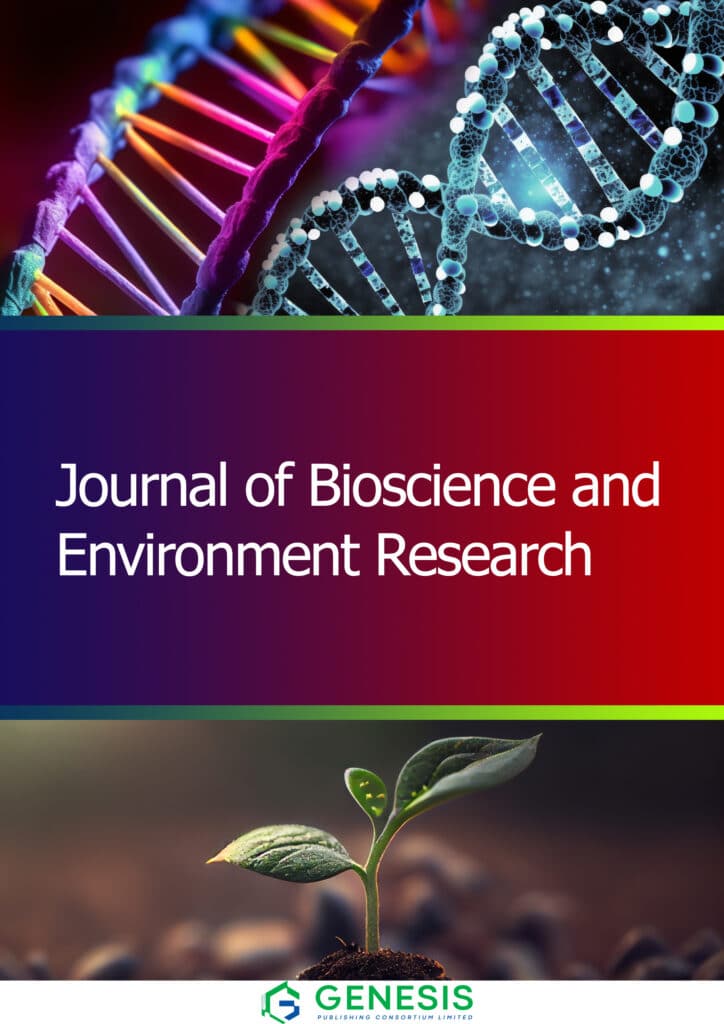Land use and cropping patterns in Bangladesh, including Jashore, are undergoing significant transformations due to various factors such as advancements in agricultural technology, improved storage facilities, enhanced communication, better marketing and networking systems, and the introduction of high-yielding seed varieties (Rahman et al., 2021). Farmers continuously adapt their land use and cropping patterns to maximize economic returns, often opting for alternative crops such as flowers, which have emerged as a viable option within traditional agricultural practices (Islam et al., 2023). People cultivate flowers as an alternative, which has become a unique practice in traditional agricultural practices (Patel et al., 2020). To conduct this study, primary and secondary data will be needed, which will be collected through a questionnaire and field survey, and from different agencies (Singh and Singh 2017). However this was not sufficient to meet the market demands, so the commercial production of flowers and ornamental plants started in Bangladesh (Sumalatha et al., 2024). Initially, a good number of farmers in the Jashore, Jhenaidah, Chuadanga, Satkhira, and Kushtia districts started the production of flowers and ornamental plants on a commercial basis (Gezmu, 2013). Bangladesh is an extensively populated country with a limited land area. The national economy of the country depends on agriculture (Faust and Dole, 2021). Agro-agricultural land is gradually being converted to homesteads and other uses to meet the demand of vast and fast population growth (Likhach et al., 2020). Consequently, flower cultivation has emerged as an alternative, allowing farmers to sustain their livelihoods while adapting to changing environmental and economic conditions (Chowdhury et al., 2022). Bangladesh, as a densely populated country with limited arable land, faces mounting pressure to optimize land use (Rahman and Hossain, 2022). To meet the demand of a large population, to increase the economic returns of farm enterprises, farmers try their best to maximize their land use pattern and cropping pattern (Sharma and Rai, 2012). So, by analyzing land use change, we can learn about the land use and land change dynamics of crop production at decimal intervals in the last three decades in the study area. We can also know the livelihood conditions, which helps to understand why they converted to cultivating flowers instead of crops. We can also know the environmental condition of the area and how it changed. This research will help determine the current state of land pattern change as well as the current environmental and livelihood conditions. The objective of this project is to identify the changing land pattern in the study area (1991–2021), to identify the environmental effects of flower cultivation on the environment in the study area, and to know the livelihood condition of the study area. This study will help to understand the land use and land cover changes in the last four decades in Godkhali Jashore and understand how livelihood approaches change or improve in response to changing land patterns and climate. This study will help to understand the changes in land use and land cover in the last four decades in Godkhali Jashore. In addition, provides information about the climatic variability in flower production. This study helps to understand how livelihood approaches change or improve in response to changing land patterns and climate.
2. Materials and Methods
2.1 Ethical approval
No ethical approval is required for this study.
2.2 Study area and periods
The study was conducted in the Jhikargacha upazila of Jashore district, Bangladesh, between January and April 2023 (Figure 1).
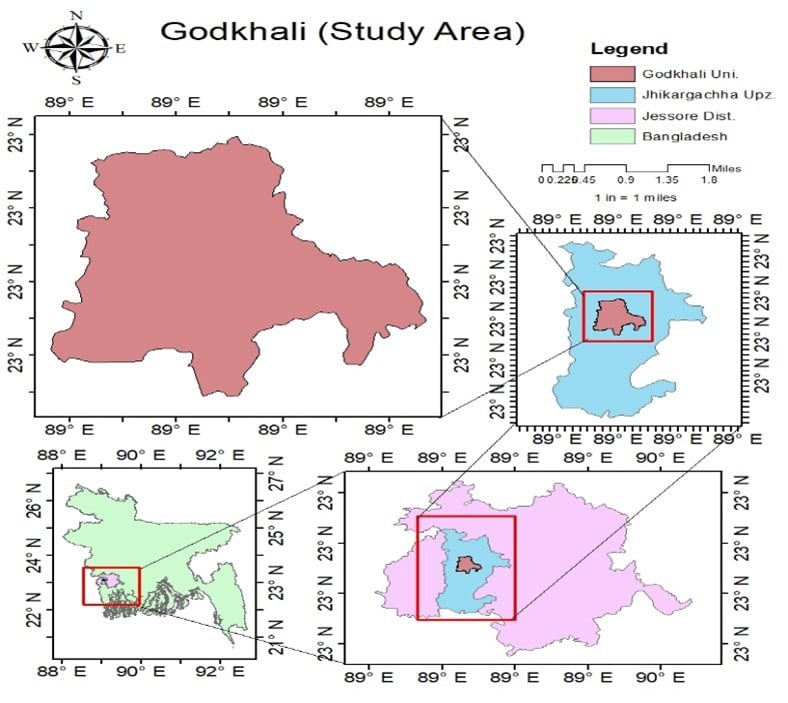 Figure 1. Location of the study area.
Figure 1. Location of the study area.
2.3 Data collection techniques
The main methods used were consultations with experts, desk studies, field visits, and interviews with farmers. Secondary data was obtained from various websites, horticulture-related institutions, and publications. Some reports and standards were reviewed to help the researcher conclude, identify activities and actors involved in the supply chain of small-scale farmers, and establish environmental requirements that were used to carry out audits amongst smallholders. The study was carried out within 3 regions in the Godkhali region, Godkhali Union, Panisara Union, and Navaron Union. A total of 300 small-scale flower growers were randomly selected. Four main methods were used to collect data namely, field visits and interviews whereby this research used closed-ended questionnaires, observation, and a checklist as means of data collection instruments, consultations with experts and desk studies were also used to help this research to conclude. Analysis was done by using both qualitative and quantitative techniques. To achieve this MS Excel computer package was used
2.4 Field visits and interviews for data collection
To conduct this study, primary and secondary data will be needed. Primary data will be collected through a questionnaire survey and focus group discussion. Secondary data will be collected from different agencies (BBS, BMD, BARC, etc.). Satellite images are also needed to analyze the land use change. Landsat data will be used to map land use and land change. The Normalized Difference Vegetation Index (NDVI) will also be calculated to determine the state of the vegetation.
2.5 Data collection
Data collection is a part and parcel of any type of project. Because data are the primary element of the study. There were several ways of collecting appropriate data. To fulfill the objective, set out for this study pertinent information and literature were collected from the two sources which are-
2.5.1 Primary data collection
Primary data from the study region had been collected using various approaches such as questionnaire survey and field inquiry to meet the specified objectives. The questionnaire survey was done by randomly selected households in the study area. A total of 300 flower cultivator farmers were selected in a random stratified method for data collection.
2.5.2 Secondary data collection
The secondary data are those which have been already collected by someone else and which have already been passed through the statistical process. Secondary information such as reports, and maps have been collected from various journals, books, Bangladesh Bureau of Statistics (BBS, 2022). Accordingly, the meteorological data, such as daily, monthly, and annual temperature and rainfall, will be collected from the Bangladesh Meteorology Department (BMD) Database for the period of 1989–2021. This data will then be analyzed to assess the magnitude and extent of climate change in the study area. A trend analysis will be carried out to see the pattern of change in climatic variables. Descriptive statistics (average maximum and minimum) will be used to analyze temperatures and rainfall for varying periods in the selected districts. For comparison between different districts, the average, arithmetic mean, and percentage will be calculated. The data was analyzed following the objectives of the proposed research work. The factors that contribute to the impact of flower cultivation on farmers' livelihoods are analyzed using a regression model.
2.6 Statistical analysis
Processing the data was done after collecting the data from the primary (field, interview, and personal observation) and secondary sources. After sorting out the data information was categorized and interpreted according to the objectives and analyses were done with the help of different analytical methods and computer programs MS Word and Excel-2021. The study area map was prepared using ArcGIS 10.5 software, utilizing Bangladesh’s administrative shape files. This software allows for efficient mapping and spatial analysis, ensuring accuracy in the representation of geographic data.
3. Results and Discussion
3.1 Changing land use pattern
Agriculture and non-agriculture land are two broad categories of land use with important social, economic, and environmental implications. Agriculture is the predominant use of land globally, with approximately 38% of the world's land surface used for crop and livestock production (Water, 2021). Agriculture is a major source of food, income, and employment for millions of people worldwide (Hemathilake and Gunathilake, 2022). Non-agriculture land includes a variety of land uses, such as urban areas, forests, wetlands, and water bodies (Patel et al., 2019). Non-agriculture land can also provide important recreational opportunities and contribute to the cultural and aesthetic values of a region. However, the conversion of non-agriculture land to other land uses, such as urbanization, can result in significant environmental impacts, such as habitat loss, fragmentation, and degradation (Guo, 2016; Yuan et al., 2005) (Figure 2). The changes in land use and land cover over time, showed how agricultural, non-agricultural, and other land categories have evolved due to factors like population growth, urbanization, and shifts in cultivation practices. Land use and land cover (LULC) changes are influenced by agricultural expansion, urbanization, and socio-economic factors (Rahman et al., 2021). Similar studies have documented the decline of agricultural land due to urbanization and economic transitions (Patel et al., 2019; Yuan et al., 2005). Remote sensing and GIS-based assessments are commonly used to track LULC patterns over time (Kumar et al., 2017).
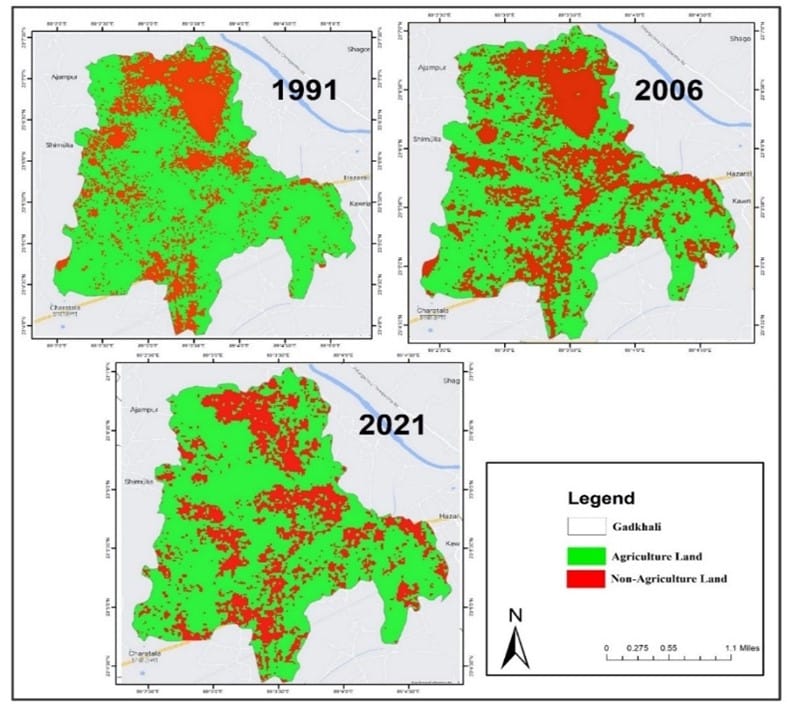 Figure 2. Land Use and Land Cover (LULC) of Godkhali Union from 1991 to 2021.
Figure 2. Land Use and Land Cover (LULC) of Godkhali Union from 1991 to 2021.
The study suggested that there had been a decline in the amount of land used for agriculture between 1991 and 2021, from 15.32% to 12.09%, respectively. On the other hand, the amount of non-agriculture land has increased from 5.85% in 1991 to 9.07% in 2021 (Table 1). Studies indicate a steady decline in agricultural land use due to commercialization and changing cropping patterns (Islam et al., 2023). Urban expansion and economic shifts often contribute to increased non-agricultural land use; a trend observed globally (Rahman and Hossain, 2022).
Table 1. Land use pattern of Godkhali Union 1991 to 2021.
In 1991, 15.32% of the land was used for agricultural purposes, while 5.85% was used for non-agricultural purposes. In 2006, the percentage of land used for agriculture decreased to 13.38%, while the percentage of non-agricultural land increased to 7.79%. However, in 2021, the percentage of land used for agriculture decreased again to 15.04%, while the percentage of non-agricultural land increased slightly to 6.12%. According to the table, the accuracy percentage was 84% in 1991, 88% in 2006, and 90% in 2021. This shift in land use patterns could be attributed to various factors, such as population growth, urbanization, and changing economic conditions (Singh and Nair, 2015). As populations grow and urban areas expand, there is increased pressure on agricultural land to be converted to non-agricultural uses such as urban development, infrastructure, and industrial activities (Kumar et al., 2017). Effective management of both agricultural and non-agriculture land is essential for sustainable development. Sustainable agriculture practices such as conservation agriculture, agroforestry, and integrated crop-livestock systems can help to reduce the negative impacts of agriculture on the environment while ensuring food security (Canton, 2021). Sustainable management of non-agriculture land requires a balance between economic development and environmental conservation through effective land use planning and management (Rao et al., 2016).
3.2 Socio-economic condition of the respondents
In terms of the socio-economic condition of the respondents, a total of 88.33% of males responded to the survey, whereas only 11.67% of females participated. The age range of respondents started from ≤20 and extended to ≥60. The highest number of respondents fell within the 31-40 age group, comprising 38.33% (115 out of 300). The second highest group was between 21-30 years, making up 21.67% (65 respondents). Nearly 18% of respondents belonged to the 41-50 age group, while 4% were between 51-60 years. Additionally, 15.67% were aged ≤20, and only 2.67% were aged ≥60. The education level of respondents was also examined. Most respondents had completed primary education, accounting for 31.67%. A small percentage had obtained higher degrees, with 3% holding a bachelor’s degree and 1.33% having a master’s degree. Almost 27% had secondary education, while 19% had completed higher secondary education. However, 18.33% of respondents were illiterate. Regarding occupation, 38.33% of respondents were involved in the flower business, while 61.67% worked as flower farmers. Among them, 71% were peasant farmers, while 29% were part-time farmers. More than half of the population (55%) lived in households with 3-5 family members. About 11% of respondents had large families with nine or more members, while 25% had 6-8 members. A small percentage (9.33%) lived in households with fewer than two members. In terms of earning members in the family, most households had one earning member (43%), while 42.3% had two earning members. Only 2% of families had four earning members, while 12.7% had three earning members. Regarding monthly household income, 37.67% of respondents earned between 25,001-35,000 BDT. Another 34% fell within the range of 15,001-25,000 BDT, while 18.67% earned between 5,001-15,000 BDT. A small percentage (4.66%) had an income exceeding 50,000 BDT, while 2.33% earned less than 5,000 BDT. Additionally, 2.67% of respondents reported a monthly income between 35,001-50,000 BDT. However, in the previous year, household incomes were reported to be better. No respondent had an income below 5,000 BDT. Among them, 38% earned between 25,001-35,000 BDT, while 35% fell within the 15,001-25,000 BDT range. A notable portion (11.33%) earned between 35,001-50,000 BDT, and around 12% of respondents reported earning more than 50,000 BDT per month in the last year (Table 2). Socioeconomic variables such as education, income, and land ownership significantly affect the sustainability of floriculture (Hemathilake and Gunathilake, 2022). Smallholder flower growers in Bangladesh face market volatility, requiring policy support for economic stability (Singh and Nair, 2015).
Table 2. Socio-economic condition of the respondents (N=300).
3.3 Effects of flower cultivation on the environment
3.3.1 Major flower cultivated by respondents
Many varieties of flowers are cultivated in the Godkhali region, which is helping this region grow economically. Floriculture has grown significantly in Bangladesh, with Jashore becoming a major hub for flower production (Faust and Dole, 2021). The economic importance of flower cultivation is rising, supporting smallholder farmers and local businesses (Chowdhury et al., 2022).
Table 3. Major flowers cultivated in the study area and their detailed information.
Rose and Gladiolus are the primary flowers cultivated in the area, with 46% of farmers growing them. Chrysanths and Gerbera are also popular, cultivated by 30% of farmers. Additionally, 16% of farmers grow Marigolds and Tuberose, while 8% cultivate other types of flowers (Figure 3).
 Figure 3. Major flowers cultivated in the study area.
Figure 3. Major flowers cultivated in the study area.
3.3.2 Average flower sale per day by local farmers
Many smallholder farmers sell flowers regularly, distributing them to various parts of the country. According to the survey, 9% of farmers earn less than 500 BDT daily from flower sales. About 39% earn between 500 and 1,000 BDT per day, while 35% earn between 1,000 and 1,500 BDT daily. Meanwhile, 17% of farmers reported earning more than 1,500 BDT per day from flower sales (Table 4).
Table 4. Average sales by farmers per day (N=300).
3.3.3 Degradation of soil fertility
Regarding soil fertility, 65% of farmers reported experiencing soil degradation due to fertilizer use, while 35% observed no signs of degradation (Figure 4). A yearly soil test for pH and nutrient levels should be conducted in either the fall or spring. Since phosphorus (P), potassium (K), calcium (Ca), and magnesium (Mg) are relatively stable in the soil, a fall test provides an accurate assessment of these elements for the following spring. If required, amendments like limestone or rock phosphate can be applied in the fall, allowing them sufficient time to react with the soil before the growing season. However, since nitrogen (N) levels fluctuate frequently, it is best to perform a soil test in the spring or just before nitrogen application to determine the optimal application rate (Rao et al., 2016). Some large and fast-growing annuals, such as sunflowers, may require additional nutrients, which can be supplied through side-dressing if necessary. Instead of using a balanced fertilizer like 10-10-10, growers can use single-element fertilizers such as ammonium nitrate for nitrogen, superphosphate for phosphorus, and potassium chloride for potassium to meet specific nutrient requirements based on soil test results. Studies highlight the need for sustainable farming techniques to maintain long-term soil health (Rao et al., 2016).
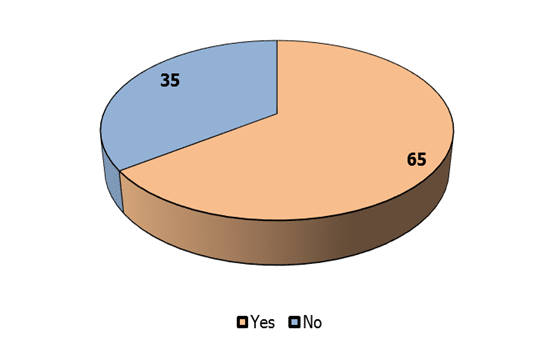 Figure 4. Degradation on soil fertility.
Figure 4. Degradation on soil fertility.
3.3.4 Use of fertilizers per month
Fertilizers such as compost, TSP, bone powder, M, P, urea, hail, tea-leaf residue, ash, etc. should be mixed and the soil should be cleaned. Organic fertilizers should be given priority in the application of fertilizers. In most cases, inorganic fertilizers are used to prepare the land. Around 34% of farmers use fertilizer one time on their land and 9% use it three times. In general, fertilizer is applied to encourage shoot development when growth begins in the spring and 57% of the local farmers use fertilizer two times on their land every month (Figure 5). An approximate amount of limestone needs to change soil pH and to support the flowers as they develop. An additional application of fertilizer is needed to support preparations for winter. Organic alternatives such as compost and bio-fertilizers could help mitigate excessive chemical use (Likhach et al., 2020).
 Figure 5. Fertilizer used per month.
Figure 5. Fertilizer used per month.
3.3.5 Organization’s name which held the awareness program
Around 55% of the awareness program is held by NGOs. The government also arranges 35% of them. Some international organizations also come here to create environmental awareness among local people about 10% of the programs held by international organizations (Figure 6). Environmental awareness programs by NGOs and government agencies play a crucial role in promoting sustainable floriculture (Gezmu, 2013). Community-based initiatives help in reducing environmental degradation through knowledge-sharing (Patel et al., 2020).
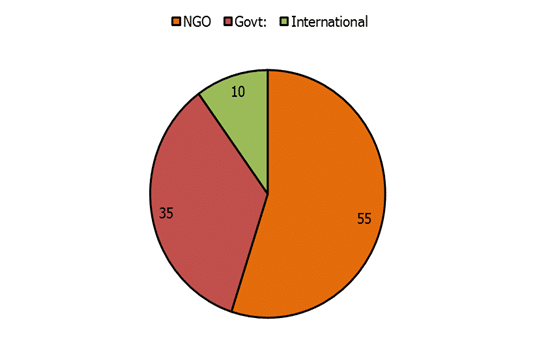 Figure 6. The Organization held an awareness program.
Figure 6. The Organization held an awareness program.
3.4 Farmer’s experience in flower cultivation
A total of 300 people were interviewed for the survey. Among them, 30% have been working for 6-10 years, 23% for 11-15 years, and 17% for 16-20 years. A smaller group, only 5%, have been working for more than 21 years. The experience of farmers in flower cultivation is closely related to their ability to adapt to changing agricultural practices and market conditions (Chowdhury et al., 2022). On average, people have been working in flower cultivation for 16-20 years (Figure 7).
3.5 Sources of irrigation water for flower cultivation
There are four main sources of irrigation for flower cultivation. Among them, shallow tube wells are the most used, with 39% of farmers (117 out of 300) relying on this source. Pond water is the second most common, used by 31% of farmers (93 individuals). Deep tube wells are utilized by 25% of respondents (75 farmers). Studies emphasize the importance of efficient irrigation methods, particularly in water-scarce regions, to ensure consistent crop yields (Singh and Singh, 2017). The least used source is river water, with only 5% of farmers depending on it for flower irrigation (Figure 8).
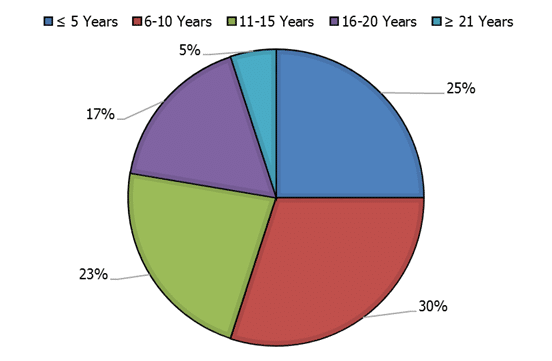 Figure 7. Experience time of farmer for flower cultivation.
Figure 7. Experience time of farmer for flower cultivation.
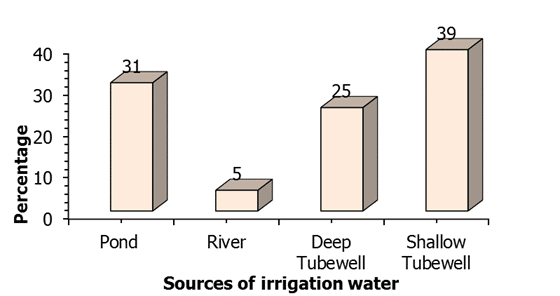 Figure 8. Irrigation water sources for flower cultivation.
Figure 8. Irrigation water sources for flower cultivation.
3.6 Production of flowers
Most respondents (25%) reported having good to very good flower production among the 300 surveyed. Additionally, 16% indicated excellent flower production. However, 6% of farmers experienced poor flower production, while 7% reported very poor production. Flower production outcomes are highly dependent on environmental conditions, including soil quality, water availability, and pest control (Faust and Dole, 2021). Previous research indicates that climate variability can lead to significant fluctuations in flower production, affecting farmers' income (Gezmu, 2013). Furthermore, 21% of the farmers in the study area described their flower production as moderate (Figure 9).
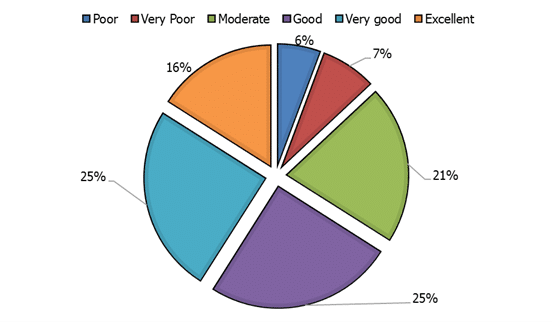 Figure 9. Production condition of flower cultivation in the study area.
Figure 9. Production condition of flower cultivation in the study area.
3.7 Road conditions to transport products
In the study area, 16% of respondents reported that the roads are in good condition for transportation. Meanwhile, 41% described the roads as being in moderate condition. Transportation infrastructure plays a critical role in the economic viability of flower farming by ensuring timely delivery to markets (Patel et al., 2020). However, 43% of respondents indicated that the roads are in very good condition (Figure 10).
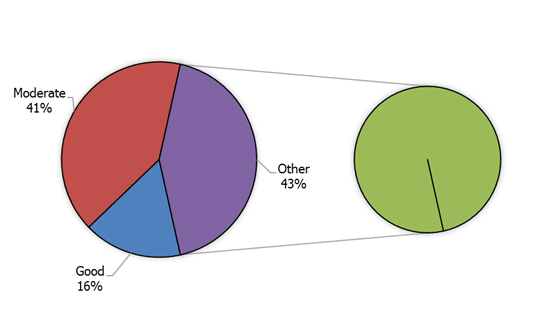 Figure 10. The situation of road condition to transport products.
Figure 10. The situation of road condition to transport products.
3.8 The housing situation of the respondents
In the study area, the majority of people (45.67%) live in half-built houses. A smaller proportion, 11.33% (34 out of 300), reside in tin-shed houses. Housing quality is often linked to socio-economic conditions and access to resources, including stable income from agriculture (Kumar et al., 2017). In rural areas, housing conditions are frequently influenced by agricultural productivity and local economic stability (Patel et al., 2020). Additionally, 43% of the population (129 out of 300) live in fully constructed buildings (Figure 11).
 Figure 11. Respondent’s housing condition in the study area
Figure 11. Respondent’s housing condition in the study area
3.9 Respondent’s participation in government/voluntary work
Various individuals participated in government or voluntary work. Among the studied population, 28.33% consistently participated in these activities, while 15% participated often. Voluntary engagement in community initiatives is often higher in areas with strong agricultural economies, as it fosters social networks and collective action (Singh and Nair, 2015). Community-based activities can enhance the resilience of farming communities by improving access to information, resources, and markets (Chowdhury et al., 2022). Additionally, around 25% of people participated moderately, and 32% participated to a lesser extent (Figure 12).
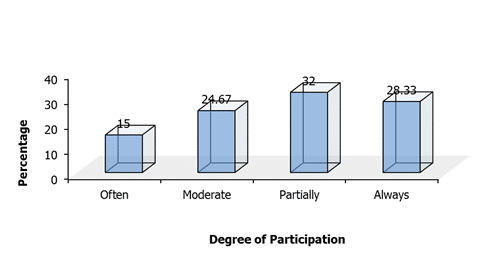 Figure 12. Respondents’ participation in voluntary work.
Figure 12. Respondents’ participation in voluntary work.
3.10 Respondent’s health condition
Most respondents (41% or 122 individuals) reported having a good health condition. Additionally, 18% indicated very good health. Another researcher indicates that agricultural laborers face higher health risks, often exacerbated by inadequate healthcare infrastructure in rural areas (Faust and Dole, 2021). In contrast, 18% (55 individuals) often suffer from various illnesses, while 23% (68 individuals) described their health status as moderate (Figure 13).
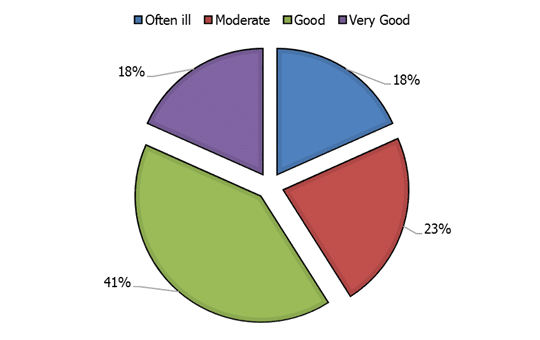 Figure 13. Health condition of the survey respondents.
Figure 13. Health condition of the survey respondents.
4. Conclusions
The present study highlights the significant changes in land patterns, environmental conditions, and livelihood outcomes for flower cultivation in Godkhali, Jashore. Flowers are popular in ceremonies, easy to obtain, and affordable, with a small quantity sufficient for decoration. Cultivating flowers on rooftops is also feasible with minimal labor required. Key findings suggest that shifting agricultural practices and environmental changes, such as water scarcity and soil degradation, have impacted flower productivity and farmers' livelihoods. Despite valuable insights, a major research gap remains in understanding the long-term effects of climate change on crop yield and the socio-economic resilience of farmers. Future studies should focus on climate adaptation strategies, sustainable farming practices, and the development of policy frameworks that can help mitigate environmental risks. Expanding the scope of research on this subject will provide comprehensive solutions for the sustainability of flower cultivation in the region.
Acknowledgements
The authors gratefully acknowledge the flower cultivator in the study area of Godkhali Jashore, Bangladesh.
Data availability
Data will be available upon request from the corresponding author.
Informed consent statement
No informed consent was required to conduct the study.
Conflict of interest
The authors declare no conflict of interest.
Funding information
This study was financially supported by Gopalganj Science and Technology University (Former BSMRSTU), Gopalganj, Bangladesh under the 2021-22 research project funding scheme. The authors sincerely appreciate the university's support in conducting this study.
Authors’ contribution
Conceptualization, methodology, data curation, formal analysis, writing original draft, supervision: Md. Rajib Hossain; Supervision, project administration, writing review, and editing: Md. Shamsur Rahman; Data collection, validation, visualization, review, and editing: Md. Aminul Islam; Investigation, software, validation, and map creation: Rifat Islam; Data collection, resources, and review: Md. Mirhazul Islam. All authors critically reviewed the manuscript and agreed to submit the final version of the article.


